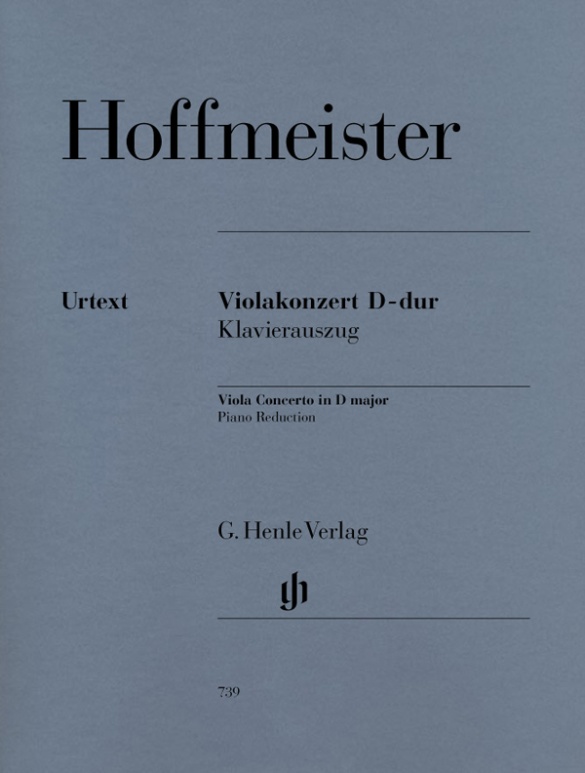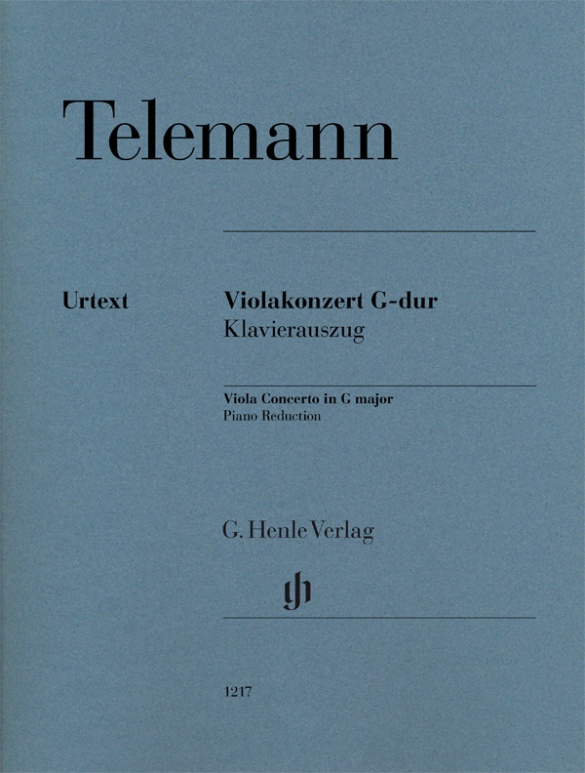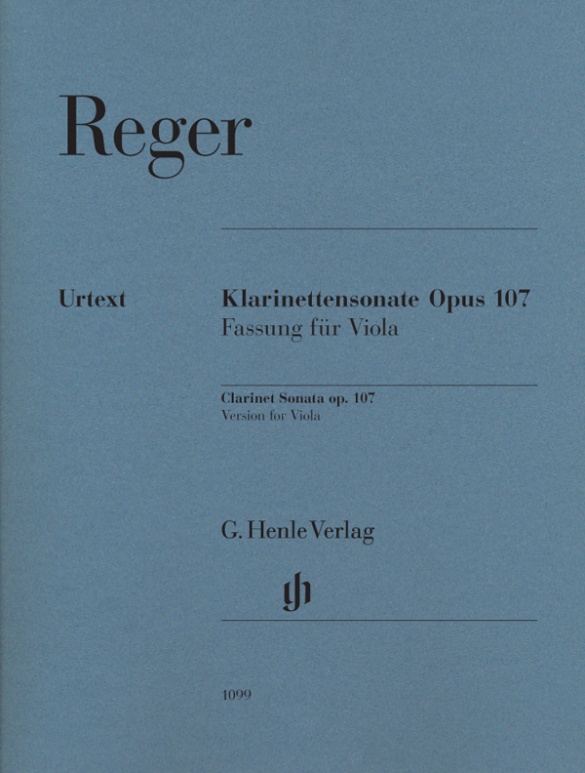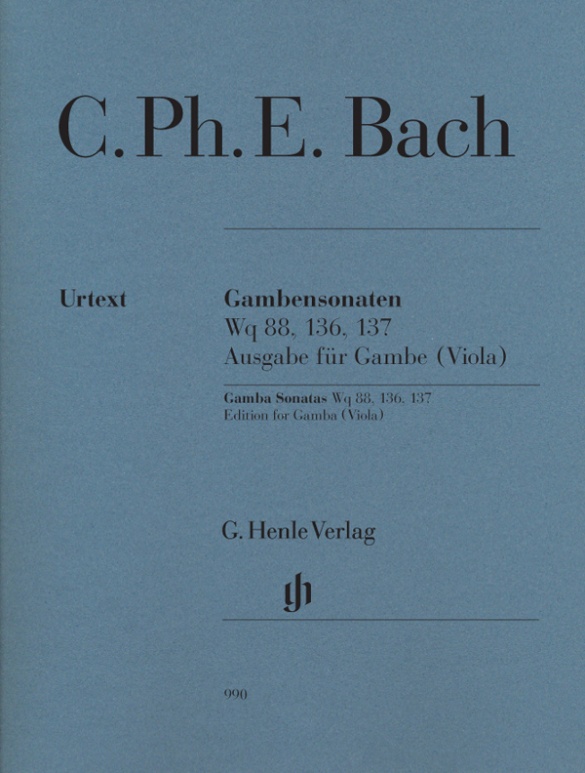

Carl Philipp Emanuel Bach
Sonates pour viole de gambe Wq 88, 136, 137
Tout comme son père, Carl Philipp Emanuel Bach a composé trois sonates pour viole de gambe. Elles datent de sa période passée au service du roi de Prusse Frédéric le Grand et donnèrent l’occasion au brillant gambiste de la chapelle de la cour, de faire étalage de sa virtuosité. Si les deux Sonates Wq 136 et 137 sont écrites avec accompagnement de basse continue, Bach fils suit, dans la Sonate en sol mineur Wq 88, le modèle fourni par son père: dans cette écriture à trois voix traitées d’égale manière, la main droite et la main gauche du clavecin rivalisent avec l’instrument soliste. La tessiture originale de la partie de gambe permet également une exécution à l’alto, une pratique d’exécution déjà documentée par les sources de l’époque. Cette version est adjointe en supplément à notre édition Urtext.
CONTENU/DÉTAILS
CONCERNANT LE COMPOSITEUR
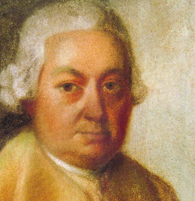
Carl Philipp Emanuel Bach
Il est surtout célèbre pour sa musique pour instruments à clavier et passe pour l’un des plus importants compositeurs de sonates (près de 150) du milieu du XVIIIe s. Sa perception de soi en tant que compositeur répond à l’esthétique du génie. Son idiome musical est marqué par un caractère « oratoire » et des effets de surprise.
| 1714 | Né le 8 mars à Weimar; deuxième fils survivant du premier mariage de Johann Sebastian Bach. Formation musicale auprès de son père; fréquentation de l’école latine luthérienne à Köthen et de la Thomasschule à Leipzig. Participation au Collegium musicum. |
| 1731 | Études de droit à Leipzig. |
| 1734–38 | Poursuite des études de droit à Francfort-sur-l’Oder. Compositions de circonstance. |
| 1740–68 | Claveciniste à la cour de Frédéric II à Berlin. |
| 1741 | Symphonie en Sol majeur (Wq 173), sa première symphonie. |
| 1742–44 | Sonates «prussiennes» et «wurtembergeoises». |
| 1753 | Manuel pédagogique «Essai sur la vraie manière de toucher le clavecin» (1re partie; 2e partie 1762). |
| 1758 | Publication des «Odes et chants spirituels du professeur Gellert» (2e collection 1764). |
| 1760 | Publication des «Six sonates pour clavecin avec reprises variées». |
| 1768 | Devient directeur de la musique et cantor à l’école latine du Johanneum à Hambourg où il succède à Telemann. Composition de musique sacrée (cantates) ainsi que d’œuvres instrumentales (symphonies, concertos, musique de chambre), de grandes œuvres vocales (passions et oratorios) et de compositions de circonstance pour la vie musicale de la ville. Organisation de concerts privés («Bachische Privatconcerte»). |
| 1775 | Oratorio «Les Israélites dans le désert». |
| 1779-87 | Publication des «Sonates pour clavier et fantaisies libres avec quelques rondos [...] pour connaisseurs et amateurs». |
| 1788 | Meurt le 14 décembre à Hambourg. |
About the Authors
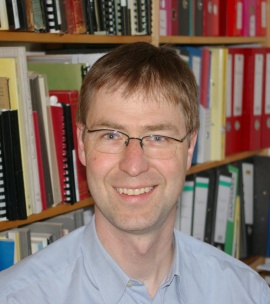
Wolfram Enßlin (Editeur)
Dr. Wolfram Enßlin read musicology and medieval and modern history in Tübingen, Bologna and Heidelberg. Following research spells in Rome and Venice, he did his doctorate on Ferdinando Paër. He worked on the revision of the Beethoven Catalogue of Works “Kinsky-Halm” for two years as an external editor; since 2003 he has been an associate at the research project Bach Repertorium, and since 2009 he has been Head of Research there (Katalog der Bach-Quellen der Sing-Akademie zu Berlin; currently preparing the “Thematisch-systematisches Verzeichnis der Werke Carl Philipp Emanuel Bachs. Die Vokalwerke”).
His primary research interests include the younger members of the Bach family (in particular Carl Philipp Emanuel Bach and Johann Christian Bach) as well as Italian Opera between 1770 and 1830.
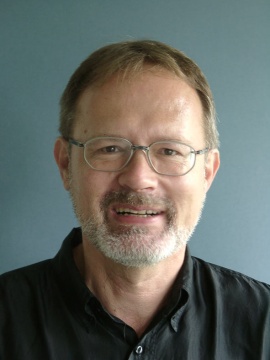
Ernst-Günter Heinemann (Editeur)
Dr. Ernst-Günter Heinemann, born in 1945 in Bad Marienberg (Westerwald), completed his schooling in Gießen and read musicology, philosophy and German in Marburg and Frankfurt/Main and also for some time Protestant church music. He did his doctorate on “Franz Liszts geistliche Musik. Zum Konflikt von Kunst und Engagement”.
From 1978–2010 Heinemann worked as an editor at G. Henle Publishers (in 1978 in Duisburg, from 1979 onwards in Munich). He edited a great many Urtext editions for the publishing house, including “Das Wohltemperierte Klavier”, Volume 1 by Bach and all of Debussy’s piano works. In addition, he wrote essays on Debussy, Grieg, Liszt, Mendelssohn and questions concerning general editing, as well as giving seminars on editorial practice for musicology students in Munich.
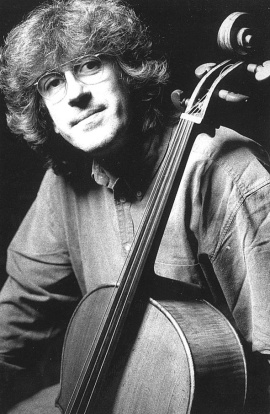
Rainer Zipperling (Doigtés gambe)
Prof. Rainer Zipperling is one of the best-known cellists and gamba players in the early music world. He has made over 400 recordings both as an accompanist and soloist, including with John Eliot Gardiner and the English Baroque Soloists, the Orchestra of the 18th Century under the direction of Frans Brüggens, the Ricercar Ensemble, the Mozart Orchestra under Claudio Abbado, the Leonhardt-Consort and the Bach Collegium Japan.
Aside from his artistic endeavours, he teaches the violoncello, viola da gamba and chamber music at the music conservatories in Cologne and Leuven/Belgium. In addition he also gives master-classes all over the world and edits previously unpublished compositions and his own arrangements. Together with two colleagues, he has also founded the CD Label , for which he has recorded Bach’s 6 Suites for Violoncello Solo.
Informations sur la sécurité du produit

G. Henle Verlag
Vous trouverez ici des informations sur le fabricant du produit.G. Henle Verlag e.K.
Forstenrieder Allee 122
81476 München
Allemagne
info@henle.de
www.henle.com
Die folgenden Ausführungen beziehen sich auf eine Ausführung mit Viola und Klavier. In dieser Besetzung haben die drei Sonaten auch den häuslichen Praxistest bestanden, und soviel vorweg: sie sind eine große Bereicherung der Violasonaten-Literatur, die doch gerade in der Barockzeit noch recht dürftig ist. Die eingerichtete Violastimme ist mit recht guten Fingersätzen und Strichen versehen, die Continuo-Aussetzung einfach und sehr gut, die Wendestellen sind optimal.
Das Liebhaberorchester, 2012recommandations
autogenerated_cross_selling
Autres éditions de ce titre
Autres éditions de ce titre


